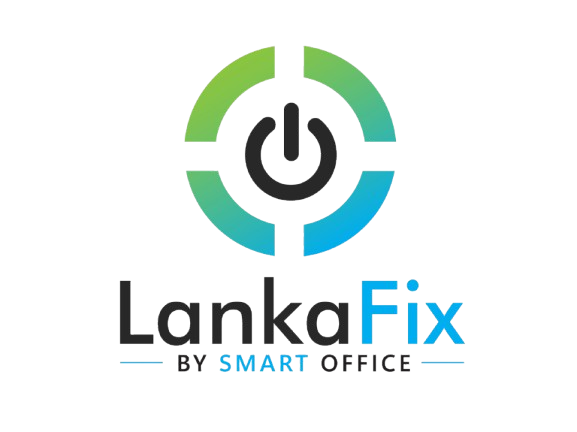Subtotal:
LKR 110,000.00

Imagine a world where creating a stunning video, analyzing data trends, or even building a smart assistant doesn’t require a PhD in computer science or a hefty budget. In 2025, this isn’t a dream—it’s the reality of AI democratization, where advanced technology once locked behind corporate gates is now in the hands of everyday creators, students, entrepreneurs, and hobbyists. Picture a farmer in rural Sri Lanka using free AI to optimize crop yields, or a high school student generating art that rivals professionals. With global AI investments surging and no-code platforms exploding, 2025 is the year AI truly becomes “for the people.” But how do you, as a beginner, dive in without drowning in jargon? This article is your lifeline: packed with practical tips, a curated list of free tools, and insights to spark your AI journey. Let’s unlock the power of AI together—because the future isn’t just automated; it’s empowered.
Unpacking AI Democratization: From Elite Tech to Everyday Magic
AI democratization refers to the process of making artificial intelligence accessible, affordable, and usable for non-experts. It’s about breaking down barriers—technical, financial, and educational—so anyone can harness AI’s potential. In 2025, this shift is driven by cloud-based services, open-source models, and user-friendly interfaces that abstract away complex coding. No longer confined to tech giants like Google or OpenAI, AI is seeping into small businesses, education, and personal projects, fostering innovation from the ground up.
Key drivers include:
Low-Code/No-Code Platforms: Tools that let you build AI apps via drag-and-drop, democratizing development for non-programmers.
Open-Source Boom: Free models like those from Hugging Face allow customization without starting from scratch.
Cloud Accessibility: Services from AWS, Google Cloud, and Azure offer free tiers, putting enterprise-level AI in your browser.
Ethical and Inclusive Focus: As AI spreads, emphasis on bias mitigation and accessibility ensures broader societal benefits.
The impact? Stanford’s 2025 AI Index reports a 21.3% rise in global AI legislation, reflecting its pervasive role in economies and daily life. Forbes highlights how this lowers costs and boosts efficiency, but warns of ethical pitfalls like data privacy.
Why 2025 Marks the Tipping Point for AI Accessibility
2025 isn’t just another year—it’s when AI shifts from hype to hyper-adoption. Accenture’s Tech Vision predicts AI agents acting autonomously at the enterprise core, while multimodal AI (handling text, images, and video) becomes standard. Workplace integration surges: Coursera notes 46% of executives scaling AI for optimization.
Trends shaping this:
Decentralized AI: Less compute-intensive models enable edge devices, making AI run on smartphones without cloud dependency.
GenAI Integration: Tools embedding AI in apps like email or design software, accelerating scientific discovery and productivity.
Economic Ripple Effects: From job creation in AI ethics to displacement in routine tasks, democratization promises growth but demands upskilling.
Global Reach: In regions like Sri Lanka, AI tools aid agriculture and education, bridging digital divides.
IBM forecasts a major shift toward optimization, with 46% of organizations scaling AI. Thrive Learning calls 2025 the year of true democratization, empowering individuals worldwide.
Beginner Tips: Your Step-by-Step Guide to Mastering AI in 2025
Diving into AI can feel overwhelming, like learning a new language in a foreign country. But with the right roadmap, it’s exhilarating. Here’s a curated list of 10 essential tips for beginners, drawn from expert advice and 2025 trends—start small, build momentum, and watch your skills soar.
Start with the Basics—Embrace Free Resources: Begin by understanding AI fundamentals. Enroll in Andrew Ng’s Coursera course on Machine Learning or DeepLearning.AI’s free intro series. No prior knowledge needed—just curiosity.
Master Python (or Skip Coding Altogether): Python is AI’s lingua franca. Install it via Anaconda and follow free tutorials on Codecademy. For no-code lovers, use tools like Zapier to automate without a line of code.
Play with AI Tools Daily: Experiment! Use ChatGPT to brainstorm ideas or automate tasks. Build habits by integrating AI into routines, like summarizing emails.
Build Small Projects: Hands-on is key. Create a simple sentiment analyzer with Python and Hugging Face, or a chatbot via Google AI Studio. Start with beginner projects on Kaggle.
Focus on Prompt Engineering: AI loves specifics. Craft detailed prompts: “Explain quantum computing like I’m 10, with analogies.” Practice on platforms like PromptBase.
Join Communities: Reddit’s r/learnmachinelearning or Discord groups offer support. Follow podcasts like Lex Fridman’s for inspiration.
Learn Math Gradually: Brush up on linear algebra and stats via Khan Academy. Don’t overwhelm—apply as you go.
Automate Boring Tasks: Use AI for real-life wins, like organizing notes with Notion AI or editing videos with CapCut.
Stay Updated: Read blogs like Towards Data Science and follow X influencers for trends.
Ethical Mindset: Understand biases and privacy. Resources like AI Ethics Guidelines from UNESCO help navigate responsibly.
As one Medium guide puts it, “Keep learning: AI changes fast.”
Free Tools for Beginners: Your 2025 AI Arsenal
In 2025, free doesn’t mean basic—these tools pack pro-level punch. Here’s a top 10 list, categorized for ease, with how-to tips for beginners.
AI Chatbots and Assistants
ChatGPT (OpenAI): Free tier for text generation, coding help, and brainstorming. Tip: Use for learning—ask it to explain concepts step-by-step.
Google AI Studio: Build custom AI apps for free. Beginner-friendly for experimenting with models.
Creative and Design Tools
Canva AI: Magic Studio for image generation and editing. Perfect for non-designers creating graphics.
Midjourney (via Discord): Free trials for AI art. Tip: Join servers for community prompts.
Productivity and Automation
Zapier Chatbots: No-code automation. Connect apps like Gmail to AI for workflows.
Notion AI: Free for note-taking with AI summaries and brainstorming.
Video and Media
Synthesia: Free AI video generator for avatars and scripts.
KlingAI: Free for faceless video creation, ideal for YouTubers.
Learning and Search
Perplexity AI: Free AI search engine with citations. Great for research.
Hugging Face: Free models for ML projects. Beginner spaces for no-code demos.
X users rave about these: “Don’t buy software—try 12 free AI tools,” shares one post.
The Upsides and Hurdles: Weighing AI’s Democratic Promise
Benefits abound: Enhanced efficiency (37% cost reduction for marketers), innovation, and inclusivity. Challenges? Data privacy, job shifts, and ethical biases—CoreSite stresses governance. Overcome by starting ethical and upskilling.
Real-World Wins: Stories from the AI Frontier
YouTube Creators: Using free tools like VidIQ and Canva, one creator hit $15K/month with faceless channels.
Marketers: 91% use AI; tools like Copy.ai boost ROI by 39%.
Entrepreneurs: X threads highlight earning via AI tools without investment.
Looking Ahead: AI Democratization Beyond 2025
By 2030, expect ubiquitous AI in wearables and decentralized systems. Trends like agentic AI will further empower users. The key? Continuous learning amid rapid evolution.
Conclusion: Your AI Adventure Awaits
In 2025, AI democratization isn’t just a trend—it’s an invitation to innovate. With these tips and free tools, you’re equipped to start. Pick one tool, try a tip, and build something today. What’s your first AI project? Share in the comments—let’s democratize knowledge together!

